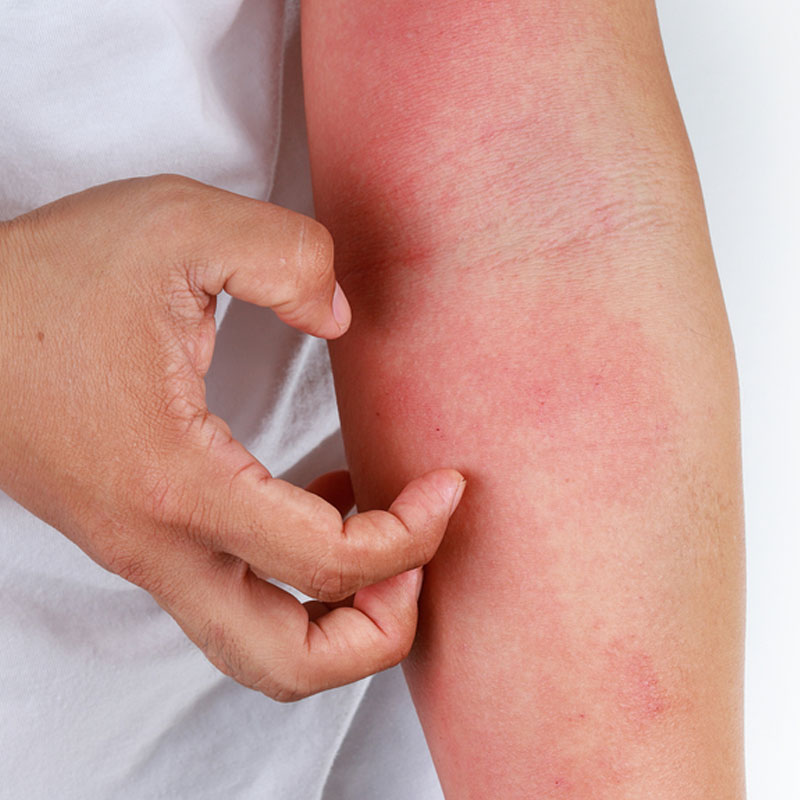WHAT IS A SKIN INFECTION?
Skin Infection Treatment – A skin infection can be defined as a condition in which the skin is attacked by bacteria, viruses, fungi or parasites that deteriorate skin cells and tissue.
TYPES OF SKIN INFECTIONS
There are 4 major categories of skin infections known today. They are as follows:
1. Bacterial Skin Infections
Bacterial skin infections
Bacterial infections can be mild or severe in nature, and usually can be treated with topical or oral antibiotics. They usually start of as small red bumps that gradually increase in size. Infections such as cellulitis, impetigo, boils and leprosy are some commonly known bacterial infections.
2. Viral Skin Infections
These can also be mild or severe in nature depending upon the virus at play. Some common viral infections are shingles, chickenpox, warts and measles.
3. Fungal Skin Infections
As fungi thrive in moist environments, fungal infections usually occur in damp regions of the body, such as the feet or armpits. Depending on the fungus, these infections can be contagious or non-contagious. Some examples include yeast infections, ringworm, athlete’s foot, and oral thrush.
4. Parasitic Skin Infections
These types of infections not only attack the skin, but also affect the bloodstream and organs. However, they are non-life-threatening for the most part. Lice, bedbugs, scabies and cutaneous larva migrans are some commonly known parasitic infections.
CAUSES OF SKIN INFECTIONS
Bacterial infections are often caused when bacteria enter into the body through cuts or wounds on the skin. Although getting a cut doesn’t equate to an immediate infection, the chances of you developing one are higher if you are immunocompromised.
The causes behind viral infections can be narrowed down into 3 categories of viruses – poxvirus, human papillomavirus and herpes virus. Variations in these viruses can lead to different types of infections.
As for fungal infections, anything that contributes to your body becoming a warm and moist environment can cause fungus growth. For instance, if you are a frequent runner, you may be prone to fungal infections due to accumulation of sweat under the armpits, which makes for a great breeding ground for fungi. Wearing wet/sweaty clothes can also cause a fungal growth, which could enter into our bodies through cuts or wounds.
Lastly, parasitic infections are caused when tiny insects or organisms burrow into your skin to lay their eggs.
SYMPTOMS OF SKIN INFECTIONS
Symptoms of skin infections can vary depending on the type of infection you have developed. Common symptoms, however, include rashes, redness of skin, itching, pain and tenderness.
For severe infections, symptoms include:
- Pus and blisters
- Skin breakdown or shedding
- Discoloured and painful skin
- Dark, necrotic appearance to skin
SKIN INFECTION TREATMENT
Depending upon the nature and severity of the infection, various treatments can be available to you.
Bacterial infections often are treated using antibiotics of the topical or oral kind. If severe, intravenous antibiotics may be administered clinically.
For fungal infections, antifungal sprays or creams are a common treatment. Parasitic infection can also be treated using oral or topical medications prescribed.
In addition to medical treatments, there are a few steps that can be undertaken at home to reduce the effects of the infection. This includes:
- Cold compress application to reduce itchiness and inflammation
- Antihistamines to reduce itching
- Topical creams and ointments to reduce discomfort and irritation
Do note that if pain or discomfort persists, it is better to seek medical attention.
PREVENTING SKIN INFECTIONS
Following basic hygiene and cleanliness habits can greatly reduce the chances of you developing any skin infections. If any persists over a prolonged period, or with severe discomfort and irritation, do reach out for medical assistance.

